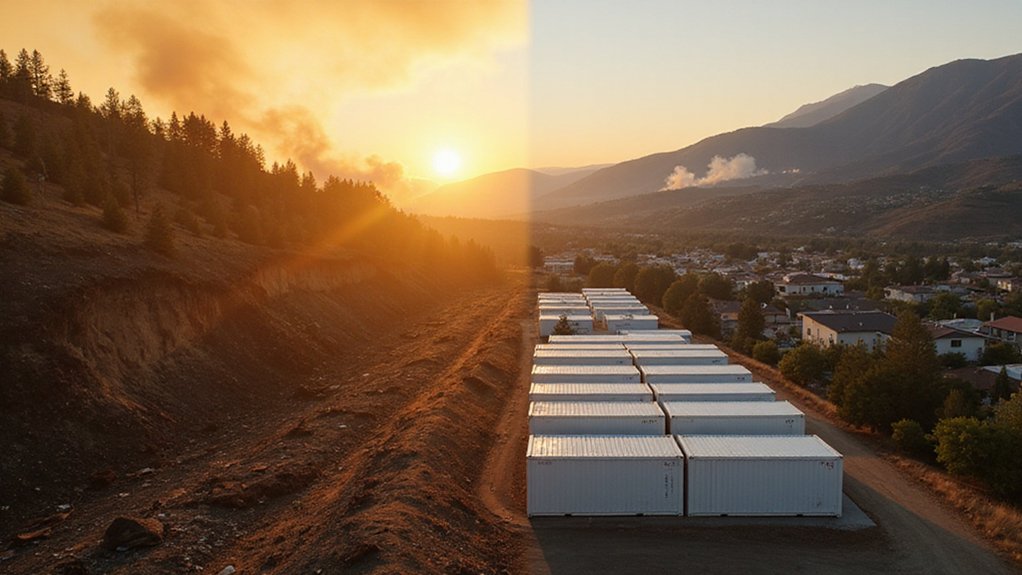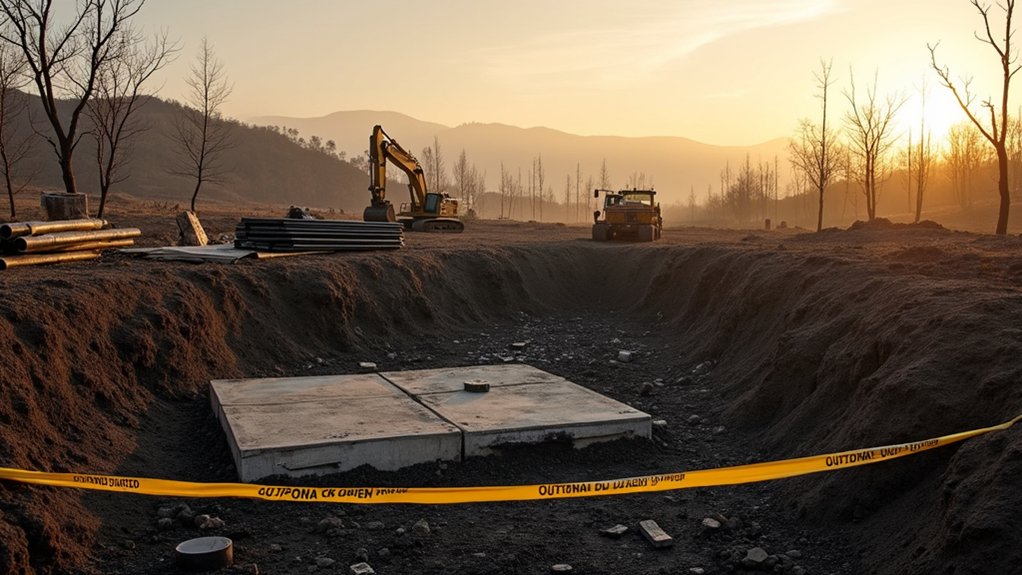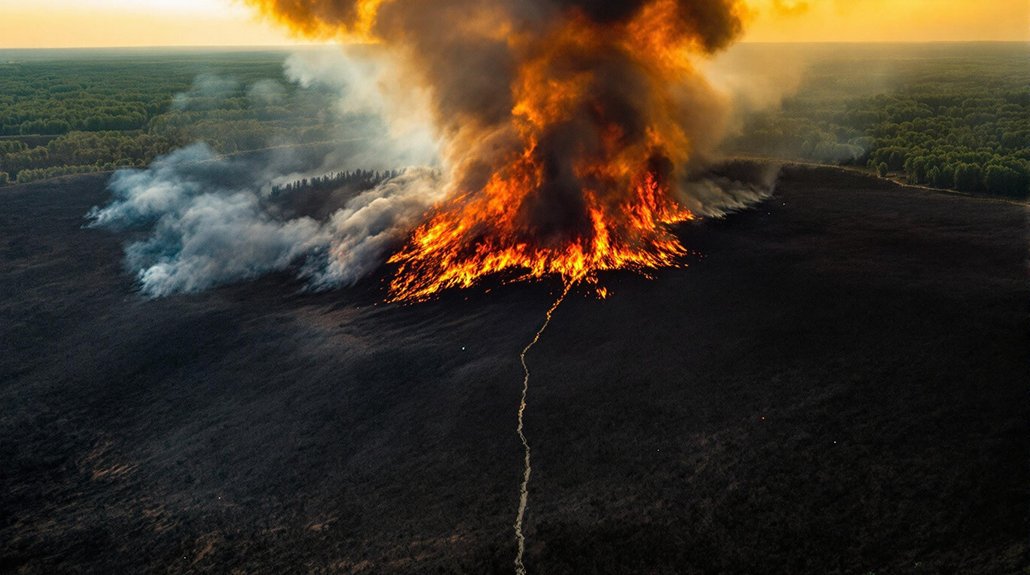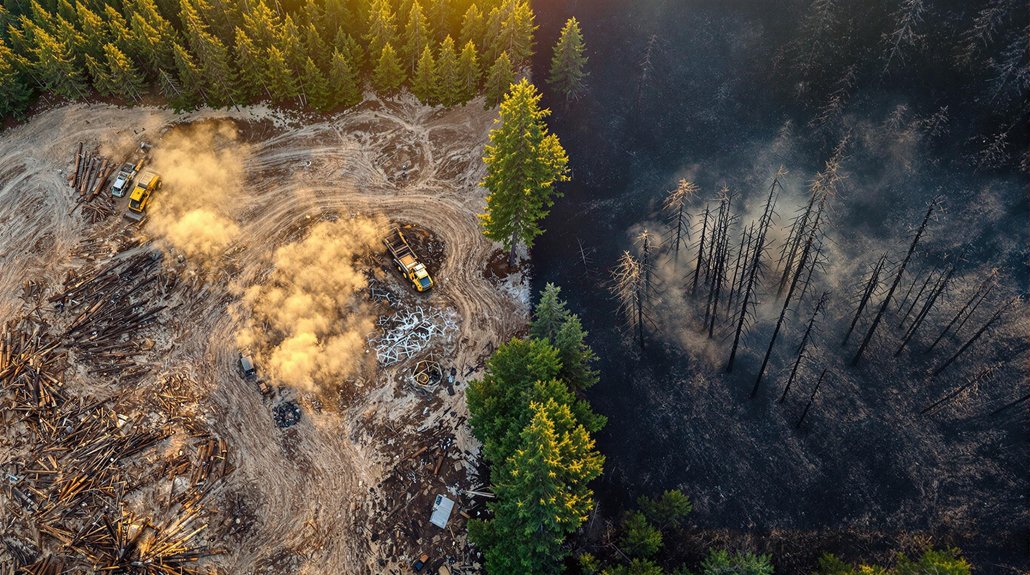When do batteries become a wildfire risk? Not as often as you’d think. Despite the scary headlines about lithium-ion batteries bursting into flames, electric vehicles don’t actually catch fire more than regular gas guzzlers. Surprised? Most people are.
Battery fires make headlines, but the data tells a different story—EVs aren’t the flaming hazards many fear.
Between 2017 and 2022, U.S. cities reported over 660 fires involving lithium-ion batteries. Sounds alarming until you compare it to conventional vehicle fires. Hybrids are actually the real troublemakers with 3,475 fires per 100,000 vehicles sold. That’s worse than both EVs and traditional vehicles. Go figure.
The battery industry isn’t sitting around waiting for disasters. They’re getting smarter. Battery storage fires are actually decreasing as a percentage of deployments. The U.S. National Highway Traffic Safety Administration has created a Battery Safety Initiative, collecting data on crashes and studying battery failures. Because knowledge is power. Literally, in this case. Unlike geothermal energy which boasts a remarkable 96% capacity factor, batteries still have room for improvement in reliability and safety.
Quality matters. A lot. The fires making headlines? Usually from cheap, non-certified batteries. People buy them because they’re inexpensive. Penny-wise, pound-foolish if your apartment burns down. New York City got tired of the nonsense and passed laws prohibiting batteries without UL certification. About time.
When battery fires do happen, experts now favor containment over suppression. Let it burn in a controlled manner. Sounds counterintuitive? It’s not. Trying to extinguish these fires can make them worse. EV fires can require 20,000 gallons of water to fully extinguish, which is ten times more than conventional gas vehicle fires. The industry learned this the hard way after the McMicken, Arizona incident. Newer lithium iron phosphate (LFP) batteries are becoming industry standard because of their high thermal stability and reduced risk of thermal runaway.
Communities are adapting too. More powerful sprinklers in parking structures. Enhanced smoke detectors. Restrictions on where chargers can be installed. Physical protection for chargers from potential collisions. Small changes, big impact.
The regulatory environment is evolving, sometimes messily. Different countries, different approaches. Some regulations conflict with established safety codes, potentially making projects less safe. Classic bureaucracy.
The bottom line? Batteries aren’t perfect. Nothing is. But with proper certification, installation, and management, they’re a powerful tool for communities – not a threat.
References
- https://theicct.org/clearing-the-air-evs-could-bring-lower-fire-risk-oct24/
- https://www.levinsimes.com/blog/lithium-ion-battery-fire-statistics
- https://cleanpower.org/resources/claims-vs-facts-energy-storage-leading-on-safety/
- https://www.gallagherbassett.com/news-and-insights/2024/aug/burning-concerns-the-growing-threat-of-lithium-ion-fires/
- https://www.blazestack.com/blog/how-many-ev-fires-in-2023-2024








